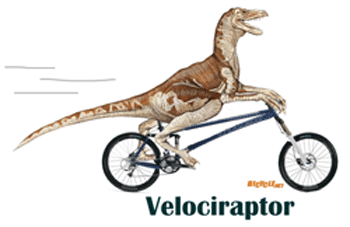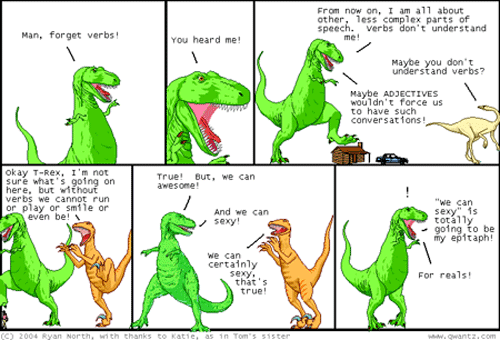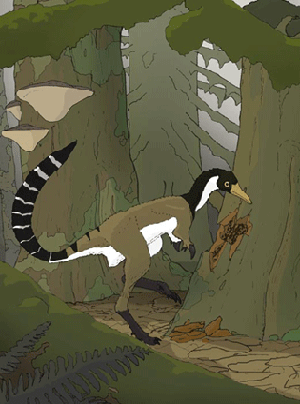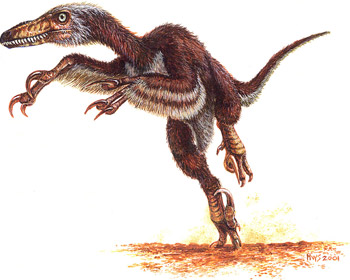Mini dinosaurs research and discussion topics

Dinosaurs were not all giants that shook the earth when they walked.
But there were also plenty of pint-sized dinosaurs.
... a miniature version of the famous predator Velociraptor - which it was closely related to.
Little Hesperonychus ran about on two legs.
... the marshes and forests that characterised that area at the end of the cretaceous
But that probably just shows how little we know about dinosaurs
... today the small carnivores outnumber the big ones.
So for the past 100 years, we have completely overlooked a major part of North America's dinosaur community."

... legendary Alberta palaeontologist Elizabeth (Betsy) Nichols.
So the species is named after her.
... we found the hip bones were fused, which would only have happened once the animal was fully grown.
... a chicken-sized insectivore named Albertonykus borealis.
... stretches the length of time that small, birdlike dromaeosaurs - known as the Microraptorinae - appear in the fossil record by a whopping 45 million years.
But little Hesperonychus seems to have thrived right up to the end of the dinosaur age.
16-Mar-2009 09:00 ET

Mini dinosaurs prowled North America
Dinosaurs were not all giants that shook the earth when they walked. Some were, of course, such as Albertosaurus and Tyrannosaurus rex - neither of whom you'd want to meet on a dark and stormy night when they hadn't had their dinner.
But there were also plenty of pint-sized dinosaurs. Canadian researchers have now discovered the smallest dinosaur species so far on the North American continent. Their work also helps re-draw the picture of North America's ecosystem at the height of the dinosaur age 75 million years ago.
Smaller than a cat
The new dinosaur is called Hesperonychus elizabethae and it weighed in at just two kilograms. Standing just 50 centimetres tall, it looked like a miniature version of the famous predator Velociraptor - which it was closely related to.
Little Hesperonychus ran about on two legs. It had razor-like claws with an enlarged claw, shaped like a sickle, on its second toe. It had a slender build and slender head with dagger-like teeth.
"It was half the size of a domestic cat," says Nick Longrich, a palaeontology research associate in the University of Calgary's Department of Biological Sciences. "It probably hunted and ate whatever it could for its size – insects, mammals, amphibians and maybe even baby dinosaurs.
It probably spent most of its time close to the ground searching through the marshes and forests that characterised that area at the end of the cretaceous."
Overlooked
Hesperonychus is currently the smallest dinosaur known to have lived in North America, Longrich says. But that probably just shows how little we know about dinosaurs. "It raises the possibility that there are even smaller ones out there waiting to be found. Small carnivorous dinosaurs seemed to be completely absent from the environment, which seemed bizarre because today the small carnivores outnumber the big ones.
"It turns out that they were here and they played a more important role in the ecosystem than we realised. So for the past 100 years, we have completely overlooked a major part of North America's dinosaur community."
Longrich and University of Alberta palaeontologist Philip Currie describe the new genus of carnivorous dinosaur in a paper published today in Proceedings of the National Academy of Sciences.
Why Elizabeth?
The fossilised remains of Hesperonychus - which means "western claw - had been collected in 1982 from several places, including Dinosaur Provincial Park. The most important specimen, a well-preserved pelvis, was recovered by legendary Alberta palaeontologist Elizabeth (Betsy) Nichols. So the species is named after her. Nobody studied the fossils for 25 years, until Longrich came across them in the University of Alberta's collection in 2007. Longrich and Currie concentrated on the fossilised claws and a well-preserved pelvis for their description.
The claws were thought to belong to very young dinosaurs, Longrich says. "They were just so small. But when we studied the pelvis, we found the hip bones were fused, which would only have happened once the animal was fully grown.
But when we studied the pelvis, we found the hip bones were fused, which would only have happened once the animal was fully grown.
"Until now, the smallest carnivorous dinosaurs we have seen in North America have been about the size of a wolf. Judging by the amount of material that was collected, we believe animals the size of Hesperonychus must have been quite common on the landscape."
Breaking records
Currie and Longrich last year described the previous record-setting small North American dinosaur - a chicken-sized insectivore named Albertonykus borealis.
The discovery of Hesperonychus is the first sign of small carnivorous dinosaurs in North America. It also stretches the length of time that small, birdlike dromaeosaurs - known as the Microraptorinae - appear in the fossil record by a whopping 45 million years.
Specimens from China have been found that are 120 million years old. But little Hesperonychus seems to have thrived right up to the end of the dinosaur age.
Adapted from a press release written by Grady Semmens at the University of Calgary.
The paper "A microraptorine (Dinosauria–Dromaeosauridae) from the Late cretaceous of North America" by Nicholas R. Longrich and Philip J. Currie is published in the March 16 advanced online edition of the Proceedings of the National Academy of Sciences at: www.pnas.org
More help with words
| breed | cast | community | conference | contract |
| environment | fertile | frame | individual | journal |
| preserve | remains | rigid | shared | species |
| spine | structure | typical |

